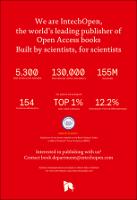Chapter Urban and Industrial Habitats: How Important They Are for Ecosystem Services
| dc.contributor.author | Sierka, Edyta | |
| dc.contributor.author | Wheeler, Anne | |
| dc.contributor.author | Woźniak, Gabriela | |
| dc.date.accessioned | 2021-06-02T10:10:16Z | |
| dc.date.available | 2021-06-02T10:10:16Z | |
| dc.date.issued | 2018 | |
| dc.identifier | ONIX_20210602_10.5772/intechopen.75723_352 | |
| dc.identifier.uri | https://library.oapen.org/handle/20.500.12657/49238 | |
| dc.description.abstract | The sustainable management of natural resources can make human survival possible. Sustainable management is based on a deep understanding of the complex mechanisms of the Earth’s natural ecosystems and of how those resources can be managed without compromising future benefits and availability. The sustainable management of natural resources becomes much more complicated when there is severe and constant anthropogenic impact, and therefore, an interdisciplinary approach has to be undertaken to improve the understanding, assessment, and maintenance of the natural capital, and the related ecosystem services, in urban-industrial areas. In ecological restoration, the biggest challenge is to find a general consensus of suitable biodiversity indicators and economically viable measures, which will produce multiple socially and ecologically guided environmental benefits. There is difficulty in reaching such consensus because of the complexity, and differing understanding, of the biodiversity concept. In an effort to restore sites disturbed by industrial (mining) activities, restoration projects should involve ecologically based methods and approaches, which will be able to fulfill many stakeholders’ expectations for sustainable development and human well-being. The integrated natural and human models for sustainable management can used to understand the dynamics of ecosystems, including biodiversity and trophic levels (including mid-trophic consumer influences), in order to simulate and evaluate different management scenarios in relation to biodiversity and ecosystem services. There is still a need for the increasing understanding of the role of biodiversity and ecosystem service identification as important factors influencing the dynamics of ecosystem and sustainable management scenarios. | |
| dc.language | English | |
| dc.subject.classification | thema EDItEUR::P Mathematics and Science::PS Biology, life sciences::PSA Life sciences: general issues::PSAF Ecological science, the Biosphere | en_US |
| dc.subject.other | biodiversity, ecosystem functioning, natural capital, urban-industrial areas, ecosystem services, interdisciplinary approach, sustainable management scenarios | |
| dc.title | Chapter Urban and Industrial Habitats: How Important They Are for Ecosystem Services | |
| dc.type | chapter | |
| oapen.identifier.doi | 10.5772/intechopen.75723 | |
| oapen.relation.isPublishedBy | 09f6769d-48ed-467d-b150-4cf2680656a1 | |
| oapen.relation.isFundedBy | FP7-ENV-2012-two-stage | |
| oapen.grant.number | 308428 | |
| oapen.grant.acronym | OPENNESS |

